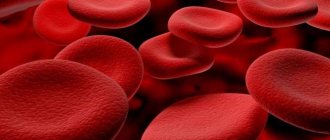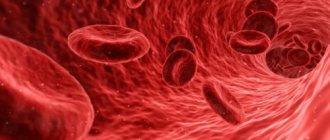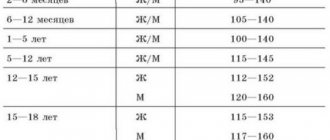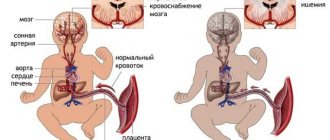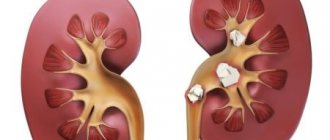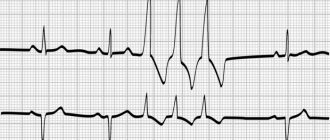What are the dangers of anemia?
Blood cells, which are represented by erythrocytes, platelets and leukocytes, move freely in human blood. Each group of elements performs a specific function. With anemia, red blood cells suffer, in which the hemoglobin content decreases. This component not only colors the blood in its characteristic color, but is also responsible for gas exchange in the body. Hemoglobin carries oxygen molecules to organs and tissues, and takes carbon dioxide from them. If the hemoglobin level decreases, the person develops anemia. Hemoglobin consists of iron and a protein component. If the body's iron content decreases, this leads to a drop in hemoglobin levels. Also, with anemia, the number of red blood cells themselves may decrease, which leads to serious consequences for the body.
Anemia is most often diagnosed in women. In men, this disorder is much less common. Although in general, anemia is a very common pathological condition. As statistical analysis shows, one degree or another of anemia is observed in every 4 inhabitants of the planet. Pregnant women are at particular risk.
When people die from anemia
There are several types of anemia depending on the cause of their development:
- iron deficiency;
- hemolytic;
- pernicious;
- aplastic;
- sickle cell;
- thalassemia;
- as a result of chronic diseases.
Iron deficiency
This anemia develops for the following reasons:
- insufficient nutrition and iron intake in the body;
- acute blood loss during bleeding;
- chronic blood loss due to long-term diseases (uterine fibroids, gastric ulcer, etc.).
As a result of posthemorrhagic iron deficiency anemia, you can die if you do not stop the bleeding in a timely manner and do not replenish the volume of circulating fluid.
It is impossible to name the exact hemoglobin number at which people die, since everyone’s adaptive mechanisms work differently.
Hemolytic forms
There are a number of conditions, congenital or acquired, in which the rate of hemoglobin destruction prevails over synthesis. In some cases, increased destruction, especially caused by the production of antibodies against blood cells, malaria, and hemolytic poisoning can lead to extreme destruction of hemoglobin and death from anemia.
Read also: What foods increase hemoglobin
Aplastic
This group of diseases can be acquired and hereditary. In this case, the synthesis and proliferation of blood cells suffers, and most often pancytopenia develops - a lack of all hematopoietic germs.
With aplastic idiopathic anemia, hemoglobin can drop to 30-20 g/l, which leads to hemic hypoxia, impaired consciousness and other consequences. Without replacement with donor blood, in such cases, anemia can cause death.
sickle cell
This is a special congenital type of anemia in which red blood cells take the shape of a sickle at reduced atmospheric pressure. If a person has a severe degree of the disease, then a large number of such cells initially circulate in the blood.
Sickle-shaped red blood cells do not retain oxygen well, and their membrane is not resistant to damage. People with sickle cell have an increased tendency to form blood clots. As a result of thrombosis, a large number of red blood cells and platelets die. The cause of death in severe sickle cell anemia is thrombosis of large vessels (brain, heart), hypoxic tissue damage.
Pernicious
A disease in which antibodies to the parietal cells of the stomach are detected in the blood, which prevents the production of intrinsic factor Castle. This, in turn, leads to impaired absorption of vitamin B12, which is necessary for normal hemoglobin synthesis.
In patients with the pernicious form, the course is protracted, and adaptive processes have time to work. But if left untreated, such anemia can lead to death.
Thalassemia
Congenital hemoglobin deficiency leads to developmental disorders in children. Treatment allows you to maintain life for quite a long time.
For chronic diseases
Chronic renal failure can cause a decrease in blood hemoglobin. This is due to inhibition of erythropoietic function. The severity of the patient's condition in this case is due to the underlying disease.
What can be the consequences of anemia for the body?
The health consequences of anemia can be not only serious, but irreversible if the condition is not treated. A low level of hemoglobin affects the functioning of the human immune system, which will not be able to protect him from various diseases. People with anemia are more susceptible to a variety of infections.
To compensate for the oxygen deficiency and not deprive organs and tissues of nutrition, the body launches adaptive mechanisms. They boil down to increasing the load on the heart and blood vessels. The heart muscle performs a greater number of contractions, pushing impressive volumes of blood through itself. Therefore, ignoring the symptoms of anemia can lead to the development of heart failure.
The body becomes weak, a person gets tired faster, and cannot fully perform his duties. Unmotivated irritability appears, the psycho-emotional sphere suffers. Moreover, thought processes deteriorate, attention and memory weaken.
Taste and smell are also distorted. Anemia has a negative effect on a person's appearance. The skin becomes dry, ulcers and cracks appear on the mucous membranes, nails peel, and hair falls out.
Possible complications of anemia include:
- Frequent diseases that develop against the background of a decrease in immunity.
- Diseases of the cardiovascular system due to increased stress on the heart muscle.
- Pregnant women are more likely to develop preterm labor and have an increased risk of miscarriage. The fetus does not receive enough nutrients and begins to lag behind in development.
- If anemia manifests itself in childhood, then it is dangerous for the child’s body due to delayed growth and mental development.
- The organs of the digestive system are exposed to various diseases, vision deteriorates, and problems with the respiratory system may appear.
- If a patient develops a hypoxic coma, this increases the likelihood of his death.
Anemia 3 degrees: possible consequences for the body
Anemia has 3 degrees of severity. The last and most dangerous to health is grade 3 anemia. In this case, the hemoglobin level drops below 70 g/l, although normally this figure should remain at 120-180 g/l. With anemia of the third degree of severity, serious disturbances occur in the functioning of all internal organs.
The most dangerous consequences of this condition are:
- Development of cardiogenic shock.
- Development of acute renal failure.
- Development of massive bleeding.
- Development of heart failure with further heart attack, stroke and other serious disorders.
The likelihood of death with grade 3 anemia is very high. To prevent the progression of the disease, it is necessary to seek medical help at the first symptoms. It is impossible to diagnose anemia on your own.
Danger of disease for pregnant women
The development of anemia during pregnancy is especially dangerous. It can negatively affect the growth and development of the fetus. An increase in blood volume and the need to supply oxygen to two organisms at once leads to a physiological lack of iron in the blood. And poor nutrition and poor lifestyle aggravate the condition. If anemia is not treated during this period, the child may have the following complications:
- intrauterine growth retardation;
- improper formation of the nervous system;
- amyotrophy;
- birth with a low Apgar score;
- prematurity;
- defects of internal organs.
During childbirth, a woman with anemia experiences weakness of the uterine muscles and poor cervical dilatation. As a result, you have to resort to a caesarean section or inject oxytocin to stimulate labor. With severe anemia, fetal death may occur in the womb.
Important information: Classification (types) of anemia in adults
Anemia in women: what is the danger?
For the female body, anemia can be dangerous due to the following complications:
- The mucous membranes of the digestive system become covered with ulcers, which leads to malfunctions in their functioning.
- The kidneys and liver are unable to perform their functions fully.
- The central nervous system and cardiovascular system suffers.
- The genitourinary system is attacked by various infectious agents, which impairs female reproductive function.
- Hair becomes dull, falls out quickly, and the shape of the nail plate changes.
- Ulcers often form in the mouth, and the tongue may become inflamed. Women with anemia are more likely to suffer from tooth decay.
- The skin is attacked by harmful microorganisms, which affects its condition.
Anemia concept
Anemia is a clinical and hematological disease that contributes to a decrease in hemoglobin levels and a reduction in the number of red blood cells in blood cells. Most often, the disease is called “anemia”, since as a result of a pathological process in the body, blood circulation in the internal organs is impaired. As a result, they do not receive the required amount of oxygen and cease to function fully, and a period of oxygen starvation begins. Women and children are most often diagnosed with anemia.
Causes of anemia
Experts identify three main causes of anemia: bleeding, hemolysis and insufficient production of blood cells in the body. In addition, there are other factors that can lead to anemia:
- Genetic abnormalities:
- Congenital disorders of red blood cell production.
- Incorrect structure of red blood cells.
- Spherocytosis.
- Bassen-Kornzweig syndrome.
- Enzymatic abnormalities.
- Errors in nutrition:
- Adherence to strict diets.
- Deficiency of B vitamins, vitamin C, iron and other elements in dishes.
- Chronic diseases:
- Damage to the urinary system.
- Diseases of the heart and blood vessels.
- Autoimmune pathologies.
- Tumors: benign and malignant.
- Infectious diseases:
- Viral hepatitis.
- Malaria.
- Cytomegalovirus infection.
- Toxoplasmosis.
- Bronchitis with obstruction.
- Tuberculosis.
In addition, various poisons that enter the body, as well as taking certain medications, can provoke anemia. Additional risk factors include injuries: burns, fractures and frostbite.
Treatment of anemia
How to treat anemia? Effective treatment of anemia in most cases is impossible without an accurate diagnosis and determination of the cause of anemia.
In general, treatment of anemia includes the following points: 1. Additional intake of vitamins and microelements. 2. Treatment of individual forms of therapy depending on the type and pathogenesis. 3. Diet. 4. Treatment of diseases and pathological conditions due to which anemia developed.
Anemia is treated primarily in a hospital setting.
1. Additional intake of vitamins and microelements
Important! Before using medications, be sure to consult your doctor!
As we have repeatedly repeated, the development of anemia is based on a reduced number of erythrocytes (red blood cells) and hemoglobin. Red blood cells and hemoglobin are involved in the delivery of oxygen throughout the body and the return transport of carbon dioxide (CO2) from the body.
The main substances involved in the formation of red blood cells and hemoglobin are iron, vitamin B12 (cobalamins) and vitamin B9 (folic acid). The lack of these substances is the cause of most types of anemia, so treatment is mainly aimed at replenishing the body with these vitamins and iron.
Treatment of individual forms of therapy depending on the type and pathogenesis
Iron deficiency anemia, as well as acute and chronic blood loss - treatment is based on additional intake of iron supplements, among which are:
- For parenteral use – “Ferbitol”, “Ferrum Lek”, “Ektofer”.
- For internal administration - “Gemostimulin”, “Tardiferon”, “Ferroplex”.
Read also Encephalitis - symptoms, causes, treatment and prevention of encephalitis
B12 and B9 deficiency anemia - is treated by additional intake of vitamin B12 and folic acid, sometimes with the addition of adenosine cobalamin (coenzyme).
With effective treatment, there is an increase in reticulocytes on days 5-8 of therapy, by 20-30% (reticulocyte crisis).
Aplastic anemia - treatment includes bone marrow transplantation, blood transfusions, hormonal therapy (taking glucocorticoids and anabolic steroids).
When hemoglobin in the body rapidly drops to 40-50 g/l or below, blood transfusions are used
Diet for anemia
Diet for anemia should be rich in B vitamins, especially folic acid and B12, iron and protein.
What to eat if you have anemia: red meat, liver, fish, butter, cream, beets, carrots, tomatoes, potatoes, zucchini, squash, green vegetables (salads, parsley, dill, spinach and other greens), pistachios, hazelnuts, walnuts , lentils, beans, peas, cereal porridges, yeast, corn, seaweed, pomegranate, quince, apricot, grapes, apples, bananas, oranges, cherries, sweet cherries, honey, freshly squeezed fruit juices, mineral iron sulfate-hydrocarbonate magnesium waters
What you can’t eat if you have anemia, or limit in quantity: fats, milk, caffeine-containing drinks (coffee, strong tea, Coca-Cola), alcohol, baked goods, food with vinegar, food high in calcium.
Symptoms of anemia
Regardless of a person’s gender and age, anemia will manifest itself with the following symptoms:
- Pale skin and mucous membranes. As anemia progresses, pallor will increase.
- Increased fatigue and weakness.
- The occurrence of shortness of breath with moderate physical activity. In the future, it will bother you even at rest.
- A feeling of stiffness in the legs; cramps may appear in them from time to time.
- Nails peel, hair begins to fall out a lot.
- Seizures appear in the corners of the mouth.
- Arms and legs may tremble, and muscle weakness increases.
- Taste and smell are distorted.
- Painful sensations arise in the abdomen.
- The skin becomes dry and cracks appear on it.
- In women, the duration of menstrual bleeding may be disrupted.
If a person is elderly or mature, then his anemia will be expressed by the following symptoms:
- Frequent dizziness, fainting.
- The appearance of tinnitus, headaches.
- Sleep problems.
- Familiar foods can cause a feeling of disgust.
- Decreased appetite leads to severe weight loss.
- The development of senile dementia is possible.
- The likelihood of angina pectoris increases.
- In men, potency suffers greatly.
- If a woman has not yet entered menopause, then it can begin much earlier precisely against the background of anemia.
In childhood, symptoms of anemia may include the following:
- The child begins to lag behind in his studies, his attention and memory decrease.
- Lethargy increases, he stops taking an active part in games.
- Possible delay in physical development.
- Appearance suffers.
Features of the course of anemia in infants and adolescents
Sometimes anemia develops in newborns. A prerequisite for this is anemia in the mother. This disorder is detected immediately after the baby is born. If measures are not taken in time, anemia will progress, becoming severe. As a child gets older, he may show interest in unusual foods, for example, he may begin to chew paper, chew chalk, or eat dirt.
During adolescence, the load on the heart and blood vessels increases. The heartbeat becomes faster, blood pressure surges are observed, and shortness of breath may occur. Jaundice may develop. Children with anemia are more susceptible to various infectious diseases.
